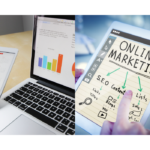In the current economic landscape, B2B SaaS companies are navigating through a storm of challenges, including higher Customer Acquisition Costs (CAC), lower Net Revenue Retention (NRR), and other headwinds. These challenges underscore the critical importance of prioritizing customer retention strategies to ensure sustainable growth and profitability. This blog post delves into the value of prioritizing retention in B2B SaaS businesses and outlines effective strategies to enhance retention.



{Credit for graphs: HAS SAAS LOST GO-TO-MARKET FIT? AND WHAT TO DO ABOUT IT By Jacco van der Kooij and Dave Boyce with data contribution from David Spitz}
The Value of Prioritizing Retention in B2B SaaS
1. High Customer Acquisition Costs (CAC): The cost of acquiring new customers in the B2B SaaS sector has been on the rise. Increased competition, sophisticated buyer expectations, and expensive marketing channels contribute to this trend. As acquiring new customers becomes more costly, the value of retaining existing customers escalates. Retention becomes a more cost-effective strategy, as the investment in keeping a customer is generally lower than acquiring a new one.
2. Lower Net Revenue Retention (NRR): NRR is a critical metric for B2B SaaS businesses, indicating the revenue retained from existing customers over a period, after accounting for churn and downgrades. A lower NRR signals a leaking revenue bucket, where the business is losing existing revenue at a rate that can negate the impact of new acquisitions. Prioritizing retention helps in stabilizing and improving NRR by ensuring that existing customers not only stay but also expand their usage and investment over time.
3. Economic Headwinds: The current economy presents numerous challenges for B2B SaaS businesses, including budget cuts, longer sales cycles, and increased scrutiny of ROI by customers. In such times, existing customers become a more reliable revenue source compared to the uncertainty associated with new customer acquisition. Retention efforts can thus act as a buffer against economic downturns, providing a steadier revenue stream.
Strategies to Enhance Retention
1. Customer Success Programs: Implementing a robust customer success program is pivotal for retention. This involves proactive engagement to ensure customers are realizing the full value of the product. Regular check-ins, training sessions, and providing personalized advice on using the product to achieve business goals can significantly improve customer satisfaction and loyalty.
2. Personalized Customer Experiences: Personalization is key to retaining customers in the competitive B2B SaaS market. Utilizing data analytics to understand customer usage patterns, preferences, and challenges enables businesses to offer tailored experiences, recommendations, and support. Personalized communication and solutions can make customers feel valued, increasing their likelihood to stay.
3. Feedback Loops and Continuous Improvement: Establishing channels for regular feedback is crucial for identifying areas of improvement and innovation. Encouraging customers to share their experiences and suggestions, and importantly, acting on this feedback, demonstrates a commitment to meeting their needs. Continuous product improvements and feature updates based on customer feedback can significantly enhance satisfaction and retention.
4. Transparent Communication: Transparency in communication, especially regarding product updates, pricing changes, and addressing service issues, builds trust with customers. Keeping customers informed and involved fosters a sense of partnership and loyalty, critical components of a strong retention strategy.
5. Loyalty and Incentive Programs: Developing loyalty programs or offering incentives for renewals and expansions can motivate customers to continue their subscription. These could include discounts, access to exclusive features, or rewards for referrals. Such programs not only improve retention but can also encourage existing customers to contribute to new customer acquisition through referrals.
6. Reducing Friction in the Customer Journey: Identifying and eliminating points of friction in the customer journey can significantly impact retention. This could involve simplifying the onboarding process, enhancing customer support channels, or making it easier for customers to upgrade or access additional features. A smooth, hassle-free customer experience is a key driver of satisfaction and loyalty.
7. Investing in Community Building: Creating a community around your product can provide customers with a platform to share ideas, challenges, and successes. Communities can be facilitated through forums, social media groups, or customer events. They not only serve as an additional support channel but also help in building a stronger emotional connection with the brand. Eg – creating a customer ambassador or referral program and turning your happiest customers into ambassadors can help lower costs of acquisition and increase loyalty. Customers who are advocating for your product are less likely to churn. We used PartnerStack to create our ambassador program.
Conclusion
In the face of higher CAC, lower NRR, and economic headwinds, prioritizing customer retention has never been more crucial for B2B SaaS businesses. By focusing on strategies that enhance customer satisfaction, loyalty, and value realization, businesses can navigate through challenging times more effectively. Implementing customer success programs, personalizing experiences, fostering continuous improvement, and building a community are just some of the ways B2B SaaS companies can strengthen their retention efforts. In the end, a strong focus on retaining existing customers not only contributes to more stable revenue streams but also lays the foundation for sustainable long-term growth.






